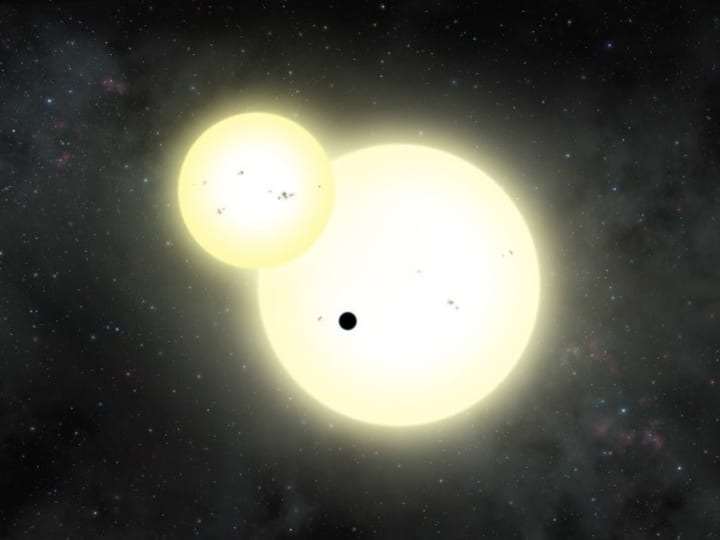The planet may be seen when looking in the same direction as the Cygnus constellation, said nasa.gov.
It is the largest planet ever discovered "around a double-star system," the report said.
The planet named Kepler-1647b cannot be seen with the naked eye but was identified by astronomers from NASA’s Goddard Space Flight Center in Greenbelt, Md., and San Diego University in California via NASA's Kepler Space Telescope, said nasa.gov.
The announcement was made at the American Astronomical Society Wednesday in San Diego, the report said.
Research on Kepler-1647b will be published in the Astrophysical Journal with Veselin Kostov, a NASA Goddard postdoctoral fellow, as lead author, according to nasa.gov.
Kepler-1647 is 3,700 light-years away and approximately 4.4 billion years old, which is around the Earth's age, the report said. The stars are like the sun, one is a bit larger, and one is a bit smaller than our home star, the report said.
The planet's size, mass and radius, are nearly the same as Jupiter, making it "the largest transiting circumbinary planet" found to date, according to nasa.gov.
Circumbinary planets are ones that orbit two stars. They are also called "Tatooine" planets sometimes, the same name as the home world of Luke Skywalker in the movie "Star Wars," said the report.
Kepler data is what astronomers use to find planets. They look for "slight dips in brightness" to indicate the possibility of a planet passing or transiting in front of a star which block a small amount of light from the star, said nasa.gov.
“But finding circumbinary planets is much harder than finding planets around single stars,” SDSU astronomer William Welsh, one of the paper’s coauthors, told nasa.gov.He added "It's a bit curious" that the biggest planet ever found took so much time to confirm.
Click here to read the nasa.gov story.
Click here to follow Daily Voice Scarsdale and receive free news updates.


